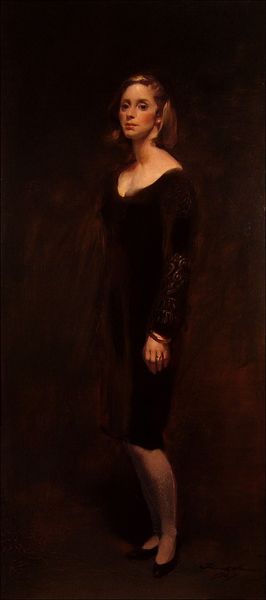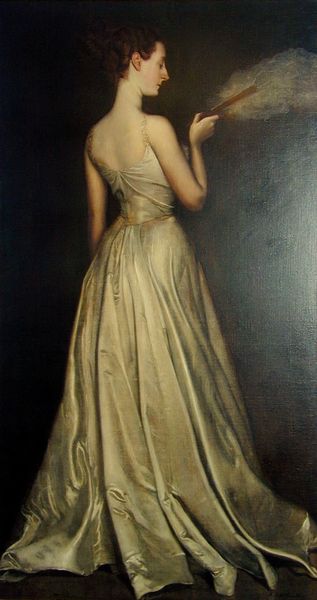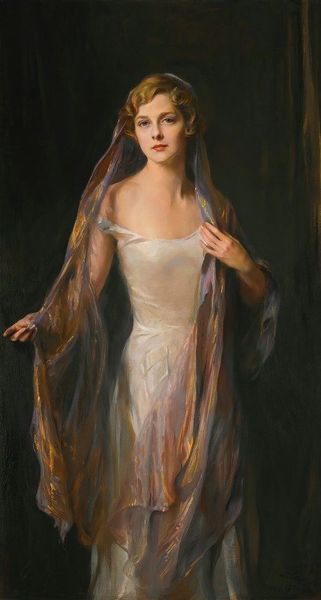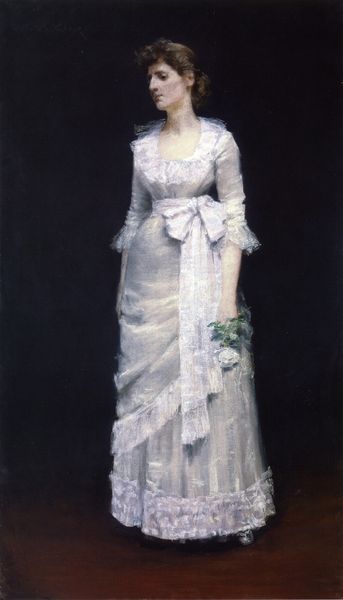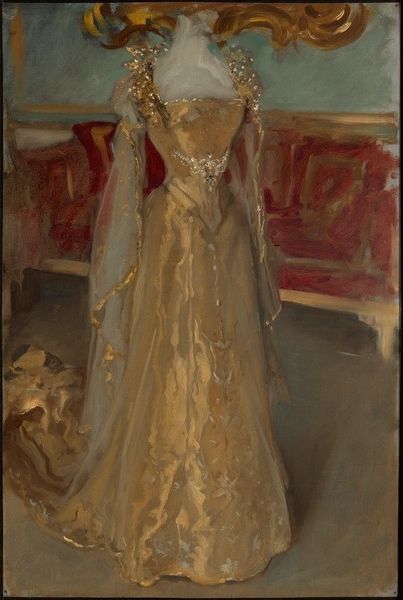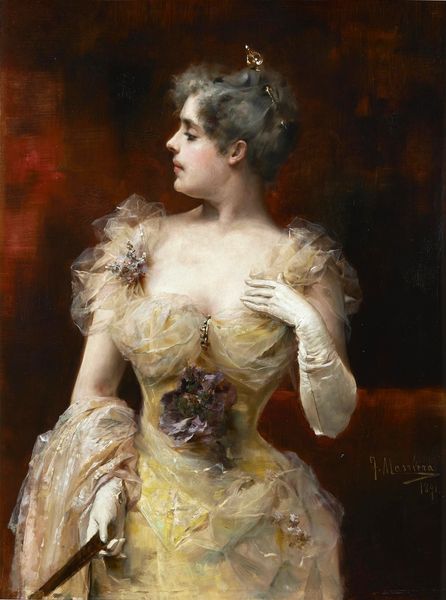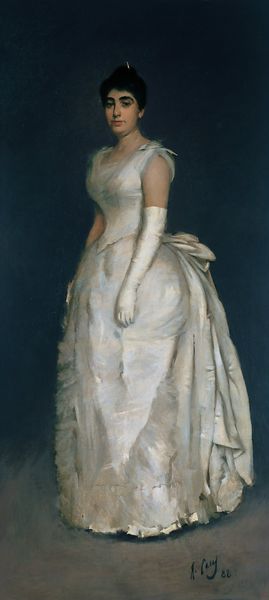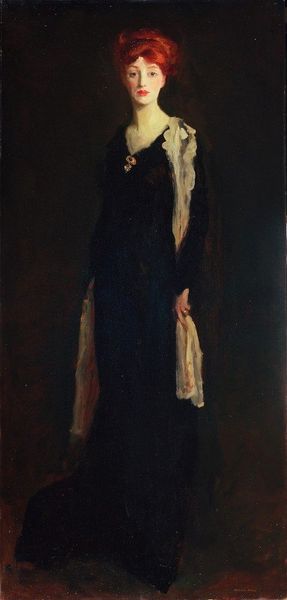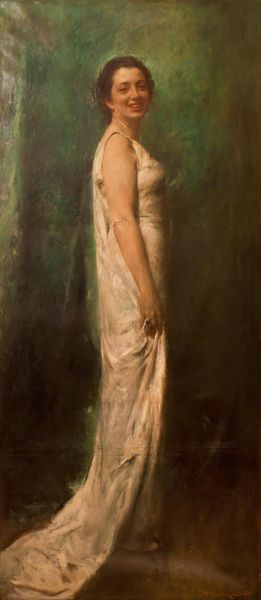
Copyright: Public domain
Editor: Here we have Gustave Courtois's "Madame Gautreau," an oil on canvas completed in 1891. The portrait, to me, feels like a study in elegance, but almost a detached kind of elegance. What do you see in this piece, beyond the surface beauty? Curator: It's interesting you pick up on that sense of detachment. I see this work deeply entrenched in the social politics of late 19th-century Parisian society. Madame Gautreau, later immortalized by John Singer Sargent, was an American expatriate known for her striking beauty and attempts to ascend the social ladder. Courtois’s portrait, while seemingly celebrating feminine beauty, subtly reinforces the limited roles available to women of the time. Editor: How so? I see a woman of obvious status. Curator: Exactly. Status, achieved through marriage and display. Consider the artist’s focus on her profile, her gown. It’s about presentation, spectacle. How does this presentation reinforce or challenge our understanding of female identity in the context of late 19th-century patriarchy? Is she an empowered subject or a carefully constructed object of admiration and social currency? What are your thoughts? Editor: That reframes my understanding completely. I was focused on the surface, but now I see a commentary on the constraints placed on women, even women of privilege. Curator: And that’s the power of art, isn't it? To reveal these hidden layers of meaning and prompt us to question the narratives we inherit. By exploring the historical and social contexts, we can develop a deeper appreciation of art's ability to both reflect and critique the society from which it emerges. Editor: It makes you think about the gaze, who controls it, and what that control means. Thank you. Curator: Absolutely. This discussion only underlines how crucial an intersectional understanding is when engaging with art of any era.
Comments
No comments
Be the first to comment and join the conversation on the ultimate creative platform.
